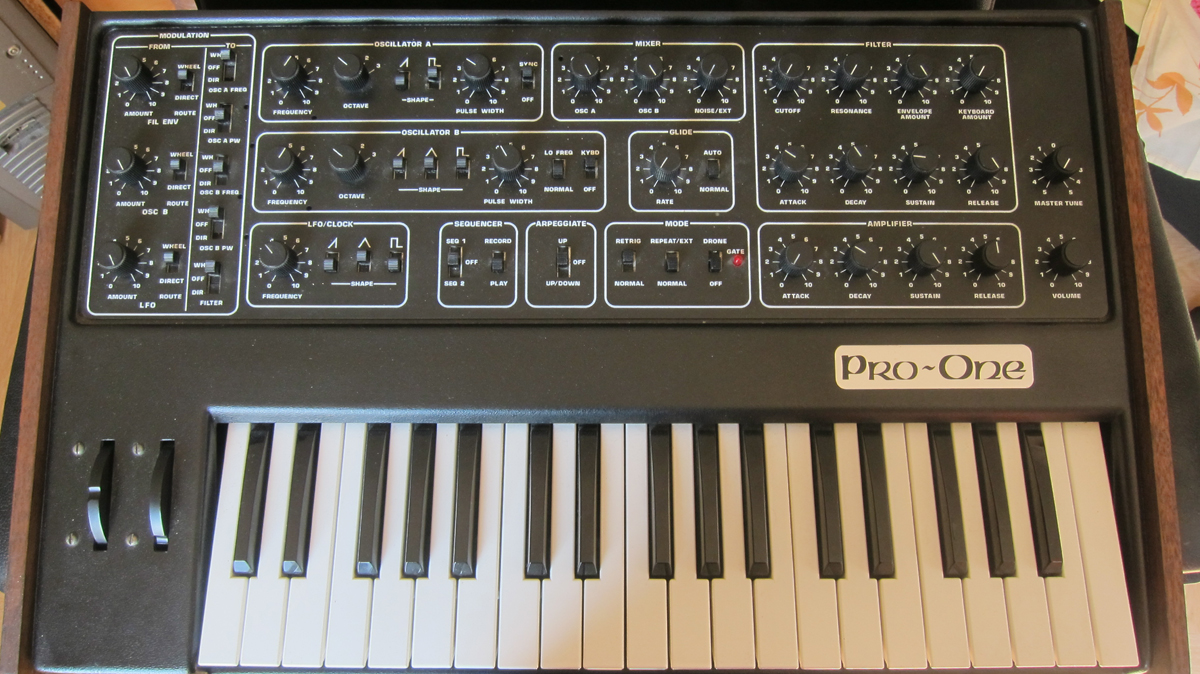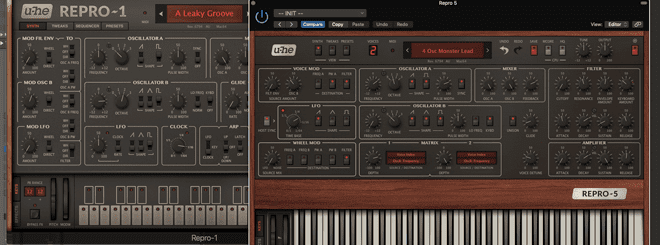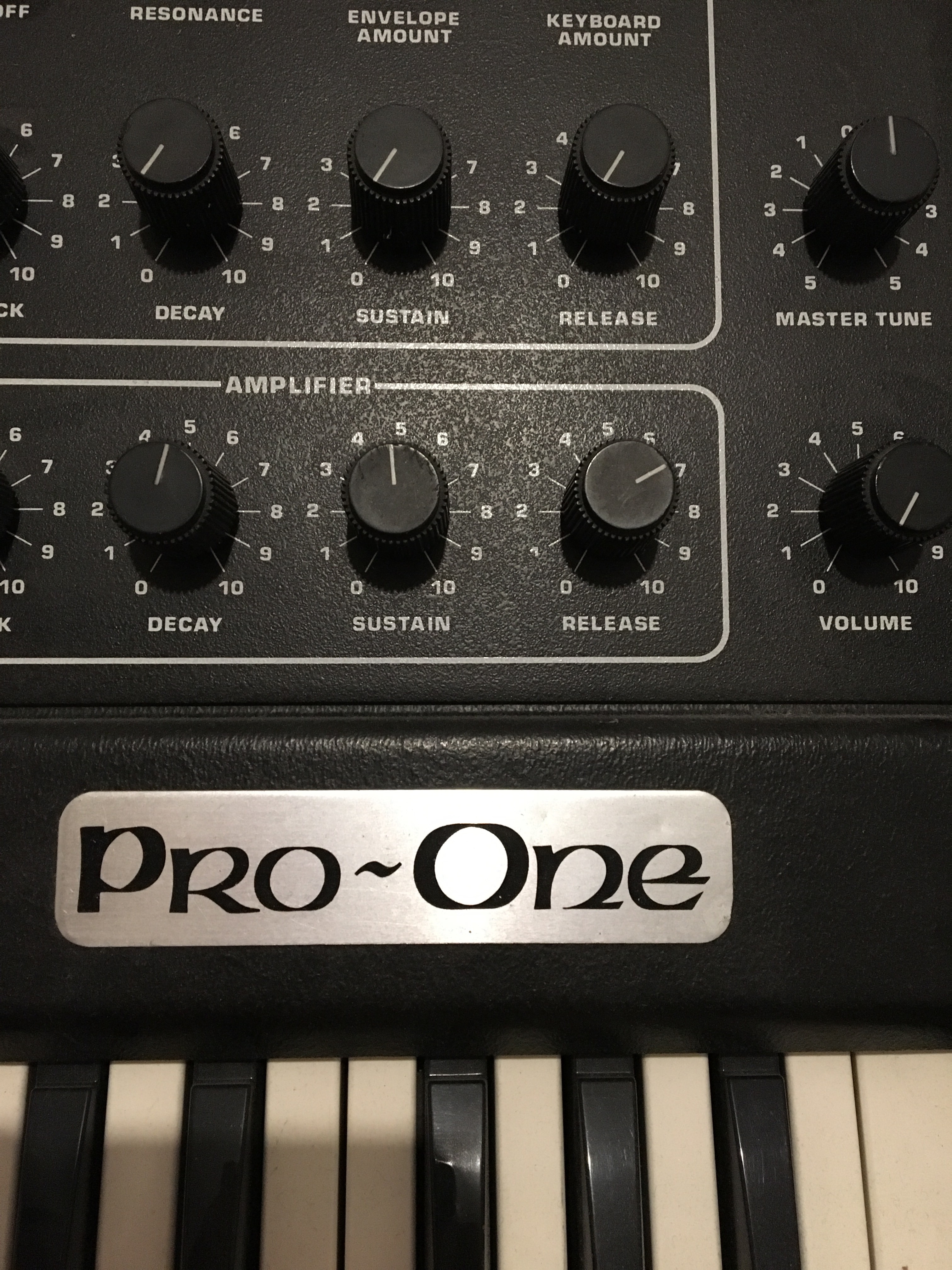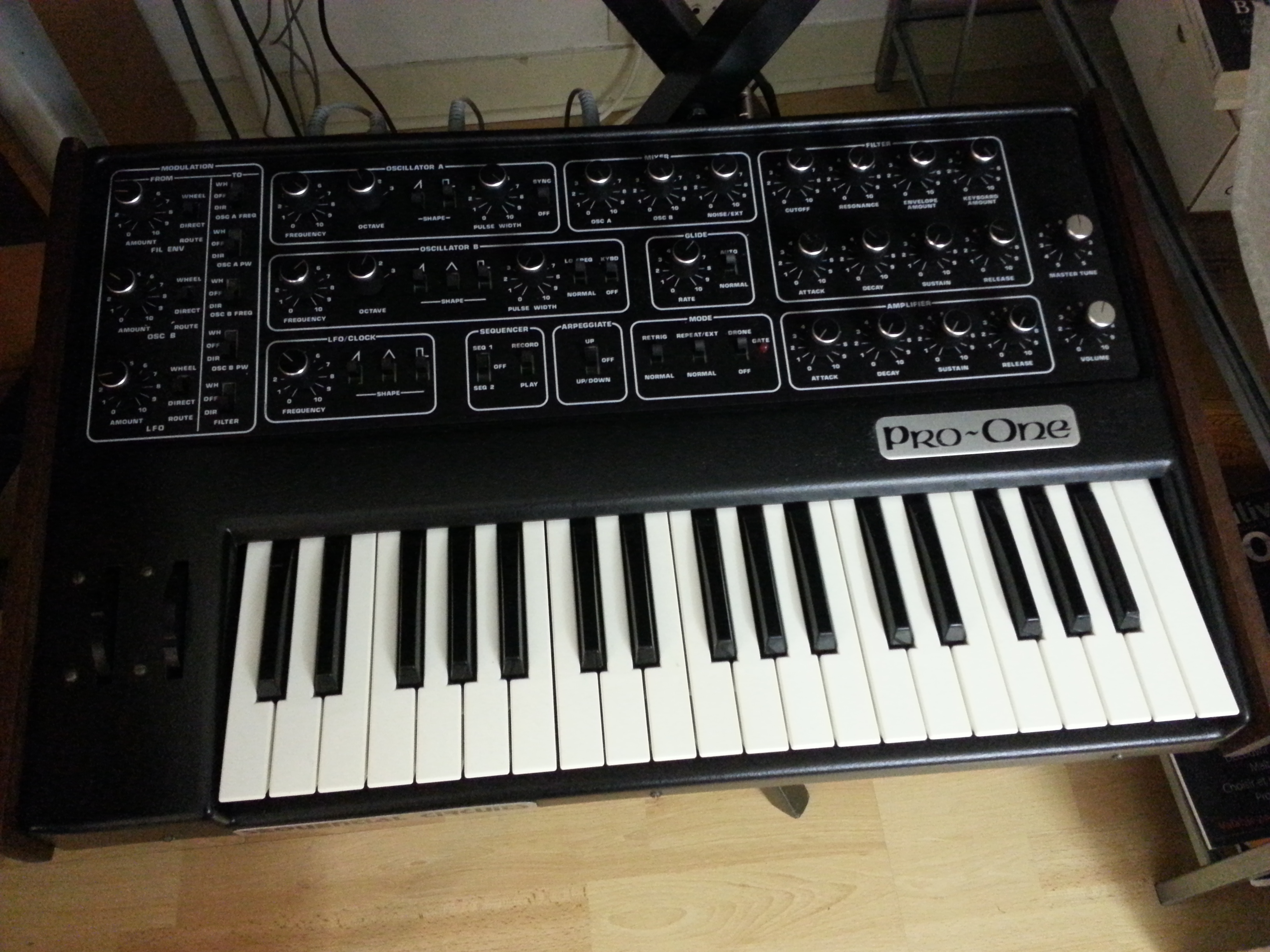

- #Sequential circuits pro one monophonic or polyphonic manuals#
- #Sequential circuits pro one monophonic or polyphonic generator#
Earlier instruments such as the monophonic Sequential Circuits Pro One. In 1978, Sequential released the Prophet-5, the first programmable polyphonic.
#Sequential circuits pro one monophonic or polyphonic manuals#
Street price: 399. Sequential Pro One Manuals - SEQUENTIAL CIRCUITS PRO ONE MONOPHONIC. This dual VCO synth features a modulation matrix and Eurorack compatibility along with the classic sonic style of the vintage Pro-One.

#Sequential circuits pro one monophonic or polyphonic generator#
The internal Gate Generator triggers filter and amplifier envelope generators as soon as external audio signals exceed a set threshold value.Architecture Class: Conventional (subtractive). monophonic 101 and polyphonic Juno 106, Juno 6 and Jupiter 6 Robinson, 1993. PRO-1 is Behringer’s take on the classic Sequential Circuits Pro-One monosynth. The Sequential Pro - One is one example of a monophonic instrument which.

The external audio input with preamp is highly interesting for running guitar, keyboards, vocals and other audio signals into the Pro-One. Although suited to polyphonic instruments, this technique has been used in. Please refer to online reviews of this legendary instrument for detailed technical specifications. The original Pro-One monophonic synthesizer from 1981. The character of the Pro-One is harsh, raw, and aggressive, and its scope is fairly wide: From punchy bass (at least at low resonance settings), screaming leads, biting brass, and far-out effects (thanks to the two LFOs on board) to snappy electronic percussion sounds, everything is available at the flick of a switch (or two).ĭue to its inherent complexity and its purely electronic timbral character, the Pro-One recommends itself for applications within thoroughbred electronic music. Sequential Circuits Pro-One monophonic synthesiser Januby J Click here to see similar items on eBay, and to buy. Of course, it’s not its architecture and the breadth of its capabilities make it at best a very distant descendent. Dave Smith's MoPho, Sequential Circuits Pro 1, Oberheim OB-1. When DSI announced the Pro 2, many considered it to be the longanticipated successor to the esteemed Sequential Circuits (SCI) Pro One from the early 1980s. The keyboard of this very example – the Achilles heel of all Pro-Ones – was completely refurbished and plays nicely. MONOPHONIC SYNTHESIZERS Monophonic means capable of playing only one note at a time. It omits the original’s 3-octave keyboard and adds MIDI In on a DIN connector. It features an arpeggiator, sequencer, & cv/gate controls. Much like the Behringer Model D Minimoog, the PRO-1 is a slightly scaled-down reproduction of the control section on the classic Sequential Circuits Pro-One monophonic synthesizer. This synthesizer is equipped with some excellent performance tools: For starters, there is a sequencer (which can store up to 40 notes), an arpeggiator, pitch and modulation wheels (the works), adjustable glide, and single or multiple triggering. The Sequential Pro-One is a 2 VCO monophonic synth with an LFO, 4-pole low pass filter, & VCA.

You can skip to 30:46 to hear just the sounds. The heart and soul of the Pro-One is its extremely rewarding modulation matrix which turns the Pro-One into a universal tool for any musician who wants to go astray and indulge in a little bit of experimentalism: Three sources (filter envelope generator, VCO B, LFO) can be assigned to five destinations (VCO A, VCO A pulse-width, VCO B, VCO B pulse-width, VCF frequency) – going the direct way, or controlled by the setting of the Modulation wheel to the left of the keyboard. In this video from YouTuber Starsky Carr, we get a side-by-side comparison between the new Behringer PRO-1 and the famous Sequential Circuits Pro One from which its cloned. The instrument is equipped with the usual sound-generating and sound-shaping component parts (two oscillators, a noise source, voltage-controlled filter, LFO, and two envelope generators) but their feature set leaves nothing to be desired: waveforms can be activated simultaneously, oscillators can be synced to each other, VCO 2 can function as an optional second LFO, there are three LFO waveshapes, filter tracking is continuously variable etc. In terms of sound, the Pro-One more or less resembles a later-generation Prophet-5 since the Prophet-5 as well as the Pro-One are based on the same set of Curtis ICs. A monophonic synthesizer or monosynth is a synthesizer that produces only one note at a time, making it smaller and cheaper than a polyphonic synthesizer. Essentially, its layout is based on the same architecture as Sequential's legendary five-voice polyphonic synth, the Prophet-5. The Pro-One is one of the most versatile monophonic synthesizers in the world.


 0 kommentar(er)
0 kommentar(er)
